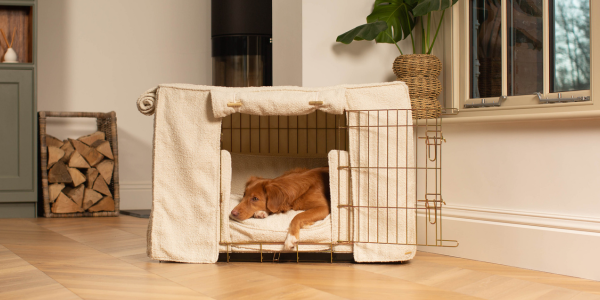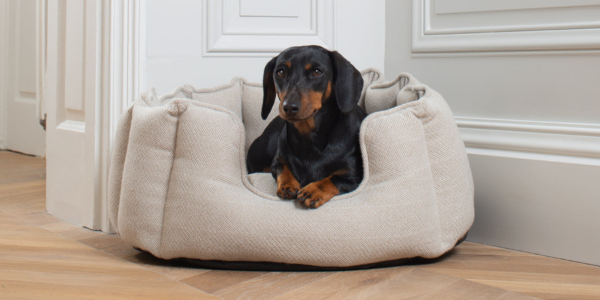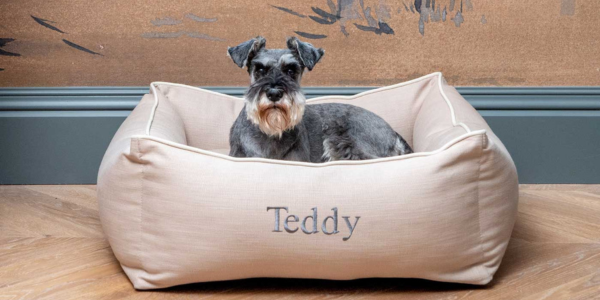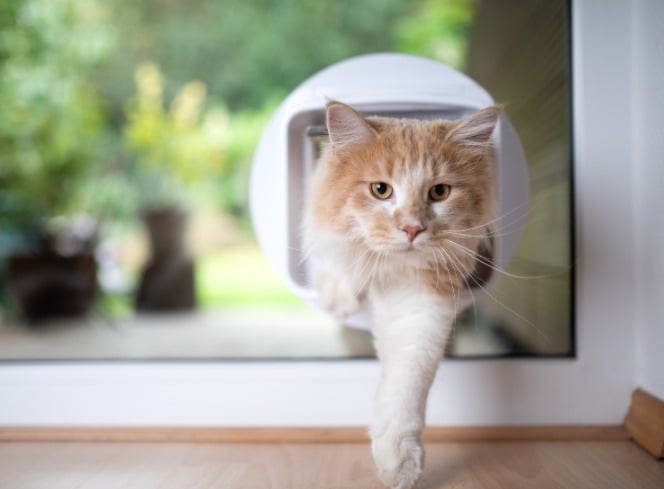As a new dog owner, deciding whether to crate train your pup or provide them with a cosy dog bed can be a tough choice. Both options have their pros and cons, and finding the right fit for you and your furry friend is essential. In this article, we'll explore the advantages and disadvantages of both sleeping arrangements and offer tips on transitioning from a crate to a bed. So, let's dive in!
Crate Training Your Pup
Crate training is an excellent way to help your puppy settle into their new home. It offers a safe den-like space where they can enjoy some quiet time, take a nap, or chew on their favourite toy.
Advantages Of Using A Crate:
- Provides a safe space for your dog.
- Assists in toilet training and managing separation anxiety.
- Keeps them safe from potential dangers.
- Harder for your dog to destroy compared to a dog bed.
- Great for travel, whether in the car or unfamiliar environments.
Disadvantages of Crate Training:
- Improper training may lead to fear or negative associations with the crate.
- Crates can be large, and not every home has enough space.
- Some dogs may find them less cosy compared to a dog bed.
Dog Crate Sets

At Lords & Labradors, we've designed crate bedding to create the ultimate cosy den for your dog. Our crate sets consist of four parts:
- The Dog Crate: With a variety of 5 sizes available, our crates are guaranteed to offer the perfect fit. Boasting thicker bars and a metal tray, they are more durable than standard dog crates.
- Crate Cushion: A super plump cushion with deep hollow fibre filling, perfect for comfort. Most of our crate cushions also have removable covers, making for easy washing. They can also be used as a standalone bed, making them perfect for travel.
- Crate Bumper: Padded bumpers that line the inside of the crate, offering a comfortable resting spot for your dog's head.
- Crate Cover: The last item in our crate sets is our crate covers. These fit over the crate and really help to transform it from being an unsightly dog crate to being part of your home. They're also great for helping to make the crate extra cosy and settling your dog in to a routine by establishing when it's time to sleep.
Crate Training Tips
To make crate training a positive experience, take it slow and reward your puppy every time they enter the crate. You can even feed them meals in there to help them get used to it. Remember, never use the crate as punishment. For more tips and tricks, check out our comprehensive crate training guide written by our pet experts.
Using a Dog Bed

Dog beds have their advantages too, offering more freedom for dogs that prefer snuggling and are easier to move around the house.
Advantages of Dog Beds:
- Gives your dog more freedom, suitable for certain personalities.
- Less bulky than a crate, making them easier to move around.
- Cosier and perfect for dogs that love to snuggle.
Disadvantages of Dog Beds:
- Dogs can roam around at night and potentially chew on things they shouldn't.
- Some dogs may chew and rip apart dog beds, meaning you have to replace them more frequently than a crate
Choosing the Right Bed for Your Dog
Consider your dog's sleeping preferences when selecting a bed. Whether they like to curl up or stretch out, we have a handy guide to help you choose the best bed for your furry companion.
How To Transition From A Dog Crate To A Dog Bed

If you've crate-trained your puppy and want to transition to a bed, it requires patience and a gradual approach. Here's how:
- Leave the crate door unlocked and slightly open for a few nights, containing them in one room to avoid overwhelming freedom.
- Fully open the crate door at bedtime, allowing them to explore but still have the option to return to the crate if needed.
- Once your dog is comfortable, remove the crate and have them sleep on the cushion or mat they used in the crate. Later, you can switch to a new dog bed.
Remember, every dog is unique, and finding the right sleeping arrangement may require some trial and error. Check out our range of crate bedding and luxury dog beds to get a better idea of what will work best for you and your beloved pup. Happy sleeping!






















































.jpg?v=1690547063208&options=)









































